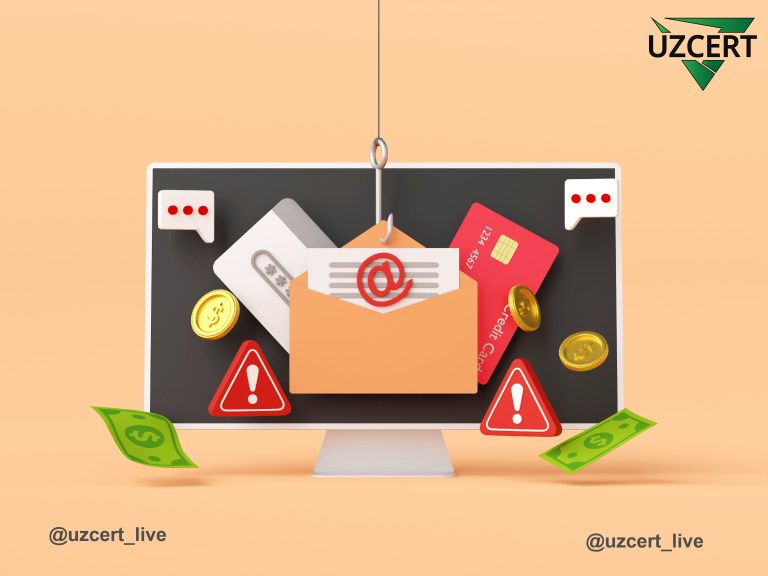
Forecast of Major Cyber Threats in Uzbekistan for 2025
Cyber threats are rapidly growing worldwide, including in Uzbekistan. Global cybersecurity trends in 2024 have shown that cyber threats are becoming increasingly complex and severe. The global damage from cybercrime is estimated at $9.5 trillion USD, and this figure is expected to reach $10.5 trillion by 2025.
Due to the digitalization of society and the economy, government institutions, private companies, and individuals face various cyber risks. In 2024 alone, approximately 60,000 cyber threats and 119 cybersecurity incidents were reported in Uzbekistan. According to experts, most of the key cyber threats and incidents were observed in the “Banking and Finance Sector,” “Manufacturing,” “Energy,” and “ICT” sectors. These indicators reflect the high level of threat in the country regarding cybercrime and information security, emphasizing the need for increased attention to these sectors and the strengthening of security measures in 2025.
Therefore, it is crucial to prepare for cybersecurity challenges and take effective countermeasures. This forecast report analyzes the cyber threats that are expected to be most relevant for Uzbekistan in 2025, including:
1. Phishing, Social Engineering, and Deepfake Attacks
Cybercriminals are intensifying phishing and social engineering attacks through email, social networks, and “deepfake” technology to steal personal data or deceive people. With “deepfake,” they can create convincing video or audio materials to gain access to sensitive information, posing a significant threat to society and raising serious cybersecurity concerns.
2. Attacks on Mobile Devices
With the increasing use of smartphones and tablets, attacks targeting mobile devices through malware could rise, primarily aiming at banking information and personal data.
3. Ransomware Attacks
Ransomware attacks, which involve blocking computer systems and demanding a ransom to restore data, will remain a major threat in 2025. Companies and government institutions will likely be the primary targets.
4. Attacks on 5G and IoT Devices
The expansion of 5G networks and Internet-connected devices (IoT) opens new doors for cyber threats. Vulnerable devices can become new targets for cybercriminals.
5. Insider Threats
Human factors—such as accidental or intentional errors—pose significant risks to organizations with large volumes of data. The likelihood of insider threats may increase in 2025.
6. Attacks on Critical Infrastructure
Sectors such as energy, transportation, and healthcare could be primary targets of cyberattacks. The protection measures for government institutions and the private sector need to be enhanced.
To effectively protect against modern cyber threats, it is essential to follow these recommendations:
- Strengthening Cybersecurity: Companies and government institutions must strengthen their cybersecurity infrastructure. This includes utilizing modern security tools and systems, such as antivirus software, firewalls, and Intrusion Detection Systems (IDS).
- Training Employees and Users: Since cyberattacks often occur due to human error, it is important to regularly inform employees and users about cyber threats and provide training.
- Enhancing Data Privacy and Security: To protect personal and confidential data, encryption methods should be used, and data backups should be created regularly.
- Measures Against Ransomware: Organizations should regularly back up data and use specialized software to protect against ransomware attacks.
- Protecting Mobile Devices: To prevent attacks on mobile devices, security tools should be used, and applications should be downloaded only from trusted sources.
- Securing IoT Devices: For safe use of 5G and IoT devices, vulnerabilities in connection points should be checked, and software should be regularly updated.
- Developing a Cyberattack Response Strategy: Every organization should have a clear plan of action for responding to cyberattacks to minimize impact and quickly restore systems.
In conclusion, it is expected that cyber threats in Uzbekistan will be higher in 2025 than in 2024, as cyber threats increase with the spread of new technologies. To counter these threats, it is necessary not only to establish strong cybersecurity systems but also to raise awareness among users and employees.
Protecting mobile devices, ensuring the stability of critical infrastructure, and strengthening measures against insider threats will be among the most important tasks for the future. Additionally, improving skills in verifying the accuracy of information and fact-checking public sources is essential. Such preparations will play a crucial role in ensuring the country’s cybersecurity in 2025.



